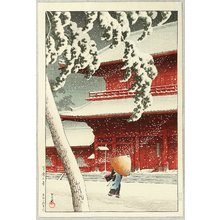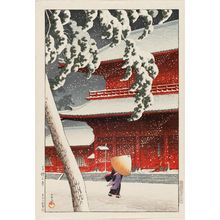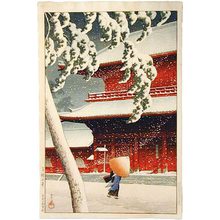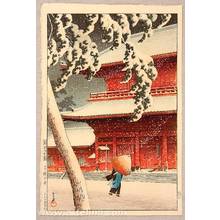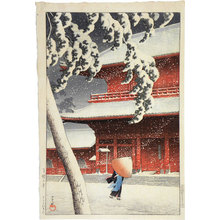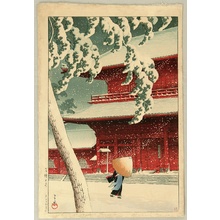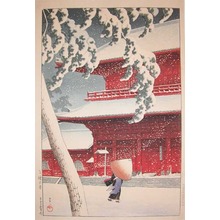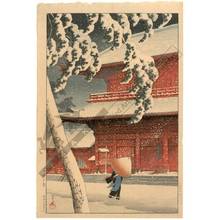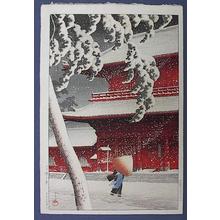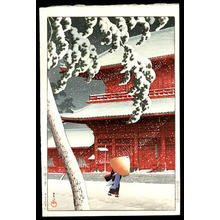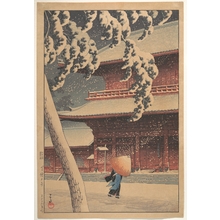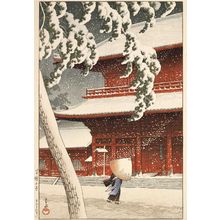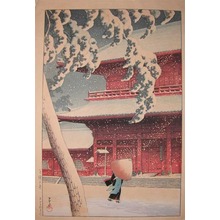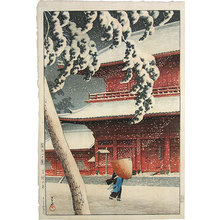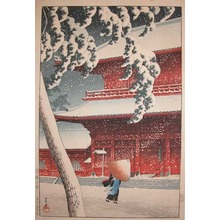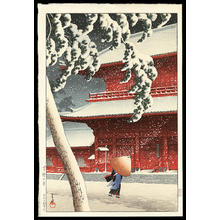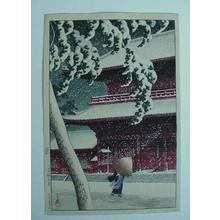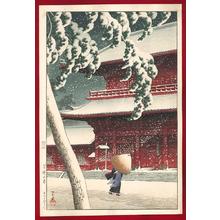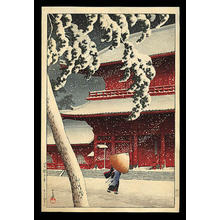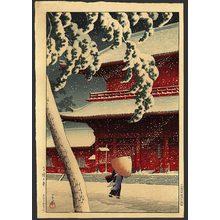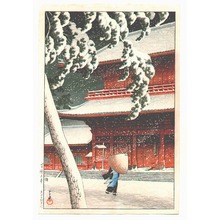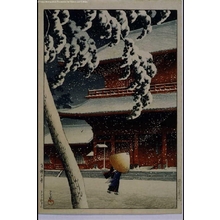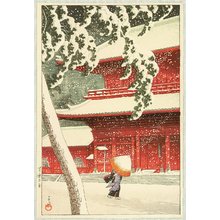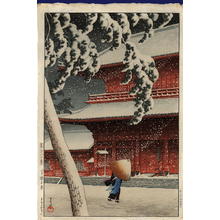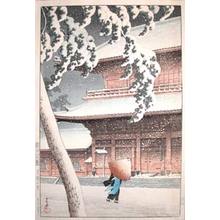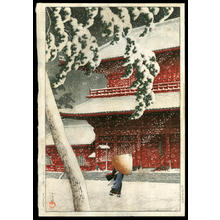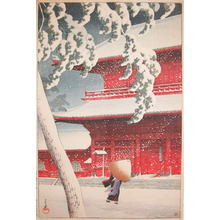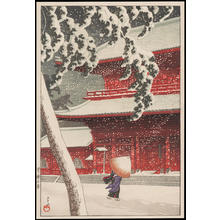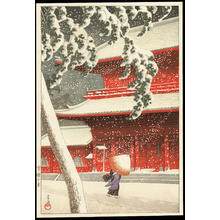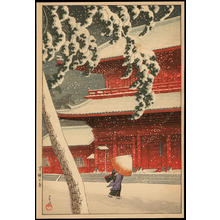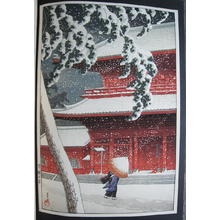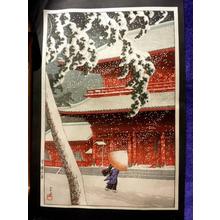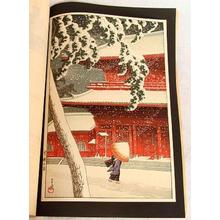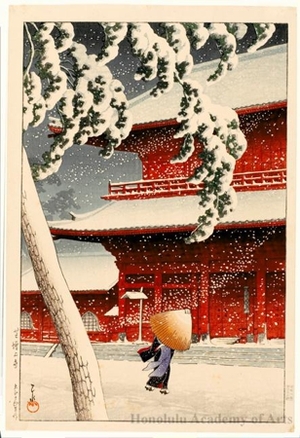川瀬巴水による浮世絵「Zöjöji Temple, Shiba」
作者:川瀬巴水
作品名:Zöjöji Temple, Shiba
制作年:1925
詳細:詳細情報...
情報源:ホノルル美術館
浮世絵(全 5,476 件)を表示...
説明:
Hasui's works evoke the power of tradition. One of Hasui's best-known works, Shiba Zöjöji Temple, Tokyo recalls motifs from Hiroshige's two masterpieces, Night Snow at Kambara and Kinryüzan Temple at Asakusa. The snow-covered red buildings refer to Kinryüzan, and the figure with umbrella is borrowed from Kambara. This Hasui print was rather controversial amongst contemporary critics and artists. They wrote that his works were “romantic,” “picturesque,” and even “shallow.” In other words, many of Hasui's works, including “Zöjöji”, were thought to be too commercial and mere copies of famous Edo period ukiyo-e. During the late 19th century and early 20th century, Japan was heavily influenced by Western culture. Yet as a wave of nationalism gradually swept over the country, a new trend began to form: that of viewing Edo culture as native and original. Hasui and his publisher Watanabe wanted to capture the true essence of Japan. Accordingly, in keeping with popular sentiment, Hasui used motifs, compositions, and themes from Edo period ukiyo-e. However, he combined them with Western techniques of shading and perspective. The resulting fusion of East and West symbolized a new, idealized Japan, one that kept its tradition even as it modernized, emerging as a sophisticated and cultured world leader. (from Nostalgic Japan exhibition 6/8/2005-)
類似の浮世絵
